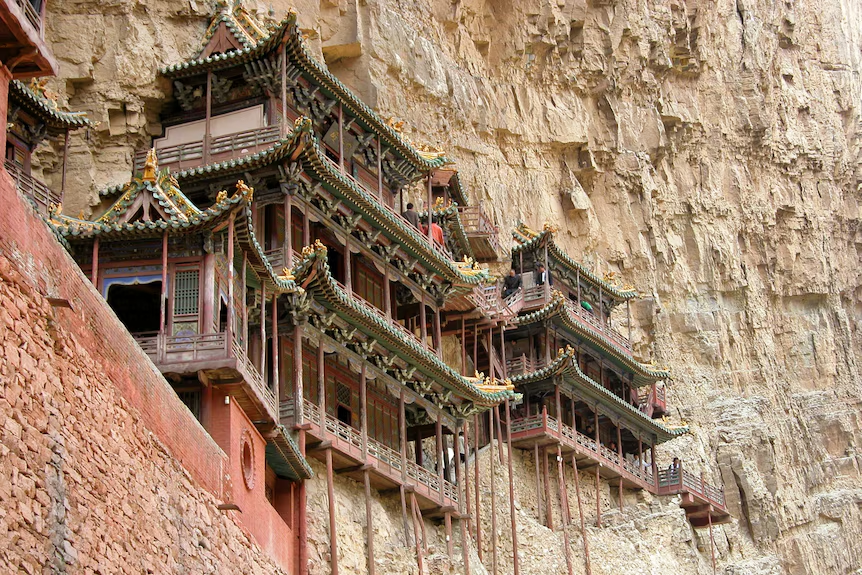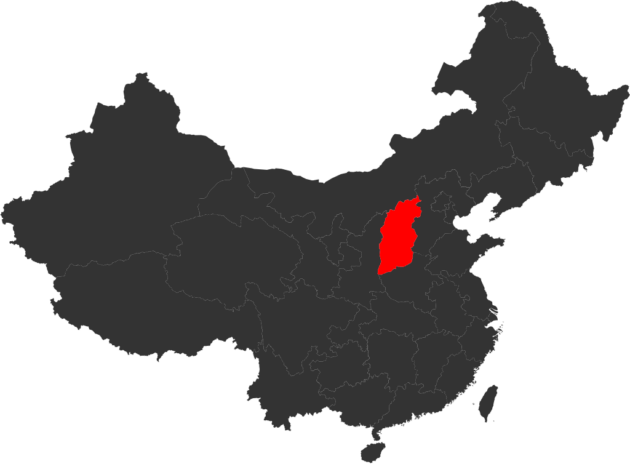Shanxi Province, located in North China, is a treasure trove of ancient history, rich culture, and diverse landscapes. Often called the “Cradle of Chinese Civilization,” Shanxi boasts over 3,000 years of recorded history, with UNESCO World Heritage Sites, ancient architecture, and unique culinary traditions. Whether you’re drawn to Buddhist grottoes, historic cities, or dramatic natural wonders, this guide will help you plan an unforgettable trip to Shanxi.
A Travel Guide to Shanxi
Why Visit Shanxi?
Shanxi is a living museum of Chinese heritage, home to more than 70% of China’s well-preserved ancient buildings from before the Song and Jin Dynasties. Its three UNESCO World Heritage Sites—Yungang Grottoes, Pingyao Ancient City, and Mount Wutai—offer a glimpse into China’s Buddhist, commercial, and architectural past. Beyond history, Shanxi’s rugged mountains, the thundering Hukou Waterfall, and its famous noodle cuisine make it a destination for cultural enthusiasts, nature lovers, and foodies alike. The province’s recent fame as a filming location for the game Black Myth: Wukong has also boosted its appeal for modern travelers.
How to Get There
By Air:
Taiyuan Wusu International Airport (TYN) is Shanxi’s main hub, offering flights from Beijing (1.5 hours), Shanghai (2 hours), Guangzhou (2.5 hours), and international destinations like Bangkok and Sydney. Smaller airports in Datong and Yuncheng serve regional routes.
From Taiyuan, taxis or airport shuttles can take you to the city center (about 30 minutes).
By Train:
High-speed trains link Shanxi to Beijing (2.5–3 hours to Taiyuan or Datong), Xi’an (3 hours), and Shanghai (7–8 hours). Taiyuan and Datong are major rail hubs, with frequent services to Pingyao and other cities.
For example, the bullet train from Beijing to Pingyao takes about 4 hours, making it ideal for a weekend trip.
By Bus:
Long-distance buses connect Shanxi to neighboring provinces like Henan and Shaanxi, but trains are faster and more comfortable for most routes.
Best Time to Visit
Spring (April–May) and Autumn (September–October): These seasons offer mild weather (15–25°C), vibrant landscapes, and fewer crowds, ideal for exploring outdoor sites like Mount Wutai or Hukou Waterfall.
Winter (December–February): Cold (down to -10°C) but perfect for experiencing snowy temple views and Chinese New Year festivals, especially in Pingyao.
Summer (June–August): Warm and humid (up to 30°C), with occasional rain. It’s peak season, so book accommodations early.
Tip: Avoid national holidays like Chinese New Year (late January/early February) and National Day (early October) to dodge crowds.
Top Destinations and Attractions
Hukou Falls (黄河壶口瀑布) ★★★
Hukou Falls, known as the “Kettle Spout Falls,” is the largest waterfall on the Yellow River and the second-largest in China. Located on the border of Shanxi and Shaanxi provinces, this majestic yellow waterfall is a natural wonder, renowned for its powerful roar and dramatic scenery. Its unique name comes from the way the river narrows abruptly, pouring through a tight gorge like water from a teapot. Whether you’re a nature enthusiast or a cultural explorer, Hukou Falls offers a breathtaking experience.








The Ancient City of Ping Yao (平遥古城) ★★★
Nestled in the heart of Shanxi Province, the Ancient City of Pingyao is a UNESCO World Heritage Site and one of China’s best-preserved historical cities. Founded in the 14th century during the Ming Dynasty, Pingyao offers a captivating glimpse into imperial China with its intact city walls, traditional courtyard homes, and historic financial institutions. Known as the financial hub of the Qing Dynasty, this compact walled city is a living museum of Ming and Qing architecture, bustling streets, and rich cultural heritage.








Yungang Grottoes (云冈石窟) ★★★
The Yungang Grottoes, a UNESCO World Heritage Site, are one of China’s most remarkable testaments to Buddhist art and history. Located near Datong in Shanxi Province, these ancient caves house over 51,000 statues and intricate carvings from the 5th and 6th centuries, showcasing a fusion of Chinese, Indian, and Central Asian influences.








The Hanging Monastery (悬空寺) ★★★
The Hanging Monastery, also known as Xuankong Si or Hanging Temple, is one of China’s most extraordinary architectural marvels, perched precariously on a cliffside near Mount Hengshan in Shanxi Province. Built over 1,500 years ago, this UNESCO-recognized site blends Buddhism, Taoism, and Confucianism in a stunning wooden structure that defies gravity. Located near Datong City, it’s a must-visit for travelers seeking history, culture, and jaw-dropping views.








Jinci Museum (晋祠博物馆) ★★
Jinci Museum is a rare gem, recognized as China’s earliest extant royal ancestral temple garden. Dedicated to Tang Shuyu, the founder of the Jin State, and later to his mother during the Song Dynasty, the complex spans over 1,400 years of history. It’s a living testament to Chinese architectural evolution, showcasing styles from the Song, Yuan, Ming, and Qing dynasties.





Wang Courtyard Residence (王家大院) ★★
The Wang Family Courtyard, also known as Wang Jia Da Yuan, is one of China’s most magnificent historical residences, located in Jingsheng Town, Lingshi County, Shanxi Province. Often dubbed the “Forbidden City of Folk Residences,” this sprawling Qing Dynasty complex is a testament to the wealth and cultural sophistication of the Wang family, prominent merchants of the era.





Shanxi Museum (山西博物馆) ★★
Shanxi Province, often called the “birthplace of Chinese civilization,” boasts a history spanning over 5,000 years, with significant contributions to art, architecture, and Buddhism. The Shanxi Museum is the perfect place to explore this legacy through its meticulously curated exhibits. From prehistoric relics to intricate Buddhist sculptures and Ming Dynasty artifacts, the museum offers a comprehensive look at Shanxi’s cultural evolution.





Qiao Family Courtyard (乔家大院) ★★
The Qiao Family Courtyard, located in Qiaojiabao Village, Qi County, Shanxi Province, is one of China’s most iconic historical residences, showcasing the grandeur of Qing Dynasty architecture and the legacy of the prosperous Qiao family. Known as a masterpiece of northern Chinese folk residences, it gained international fame as the filming location for Zhang Yimou’s Raise the Red Lantern.





Mount Wutai (五台山) ★★
Mount Wutai, also known as Wutaishan or “Five Terrace Mountain,” is one of China’s four sacred Buddhist mountains, located in Shanxi Province. Renowned for its spiritual significance, ancient temples, and stunning natural scenery, it is a UNESCO World Heritage Site and a must-visit for those interested in Buddhism, history, or outdoor exploration.





Hengshan Mountain (恒山) ★
Hengshan Mountain, known as the Northern Hengshan (Beiyue), is one of China’s Five Great Mountains, revered in Taoism and steeped in history. Located in Hunyuan County, near Datong in Shanxi Province, it boasts dramatic peaks, ancient temples, and breathtaking natural scenery. At 2,017 meters, its main peak, Tianfengling, offers a rewarding hike and a glimpse into China’s spiritual and cultural heritage.





Huayan Temple (大同华严寺) ★
Nestled in the heart of Datong, Shanxi Province, Huayan Temple (Huáyán Sì) is one of China’s most significant and best-preserved Buddhist temple complexes, offering a captivating glimpse into the architectural and cultural heritage of the Liao (907–1125) and Jin (1115–1234) dynasties. Renowned for its grand halls, intricate frescoes, and ancient sculptures, this temple is a must-visit for travelers exploring Shanxi’s rich historical tapestry.





Great Wall-Yanmenguan Section (雁门关) ★
The Yanmenguan Pass, nestled in the rugged Gouzhu Mountain range within the Hengshan Mountains of Shanxi Province, is one of the most historic and scenic sections of the Great Wall of China. Known as the “First Pass Under Heaven,” Yanmenguan has served as a critical military stronghold for over 2,000 years, guarding the northern frontier against nomadic tribes. Its strategic location, dramatic landscape, and well-preserved relics make it a compelling destination for history buffs, hikers, and travelers seeking an off-the-beaten-path experience.





Food to Try
Knife-Cut Noodles (Daoxiao Mian): Hand-sliced noodles in savory broth, a must-try in Taiyuan or Pingyao.
Pingyao Beef: Tender, marinated beef, often served cold.
Fried Boiled Pork: Crispy yet juicy pork slices, paired with vinegar dips.
Vinegar Desserts: Unique treats like vinegar-infused ice cream or drinks, exclusive to Shanxi.
Taigu Cakes: Sweet pastries with a flaky texture, great as snacks.
Where to Eat: Look for local restaurants in Pingyao’s Ming-Qing Street or Taiyuan’s food markets. Chains like Haoji Noodle House offer authentic flavors.
Where to Stay
Taiyuan: Modern hotels like Hilton Taiyuan or budget-friendly Jinjiang Inns. Expect ~300–800 CNY/night.
Pingyao: Traditional courtyard guesthouses like Pingyao Yide Hotel or Harmony Guesthouse (~150–500 CNY). Book early for peak seasons.
Datong: Comfortable options like Datong Yungang Meigao Hotel near the grottoes (~200–600 CNY).
Mount Wutai: Temple guesthouses or mid-range hotels like Wutaishan Marriott (~400–1000 CNY).
Tip: Rural areas may have limited luxury options, so prioritize location over amenities for shorter stays.
Practical Tips
Language: English is limited outside major hotels. Carry a translation app (e.g., Pleco) or phrasebook.
Currency: Cash is king in smaller towns, but WeChat Pay/Alipay are widely accepted. ATMs are common in Taiyuan and Datong.
Visa-Free Travel: As of 2025, travelers from 54 countries (e.g., France, Germany) can stay visa-free for 30 days; US/UK/Canada get 6 days. Check entry rules before travel.
Transportation: Renting a private car with a driver (~500 CNY/day) is ideal for remote sites like Hukou or Mount Wutai. Local taxis and Didi (China’s Uber) work in cities.
Crowds: Yungang Grottoes and Pingyao can get busy. Visit early morning or late afternoon to avoid tour groups.
Cultural Respect: Dress modestly at temples (cover shoulders and knees). Photography may be restricted in sacred areas.
Connectivity: Get a Chinese SIM card (China Mobile/Unicom) or VPN for accessing blocked sites like Google.
Final Thoughts
Shanxi is a destination where China’s past comes alive, from the serene Buddhist caves of Datong to the bustling lanes of Pingyao. Its blend of ancient relics, sacred mountains, and hearty cuisine offers something for every traveler. Plan your itinerary to balance cultural immersion with natural beauty, and let Shanxi’s timeless charm captivate you. Safe travels!













Leave a Reply